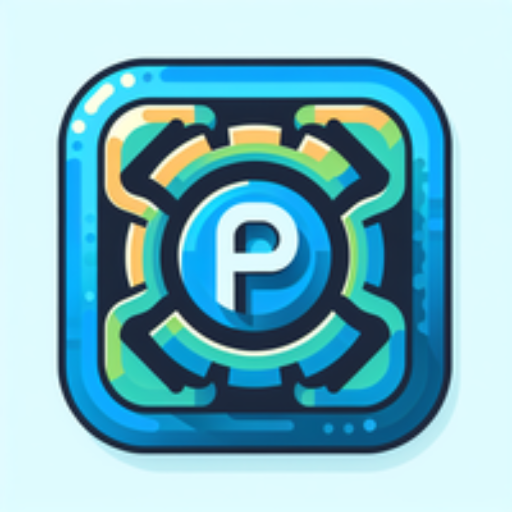学习算法的 - AI-driven algorithm learning tool

讲数据结构的plus版
Master algorithms and coding effortlessly with AI
Get Embed Code
Introduction to 学习算法的
学习算法的 (Algorithm Study Assistant) is a specialized tool designed to provide deep, comprehensive guidance on algorithms, data structures, and related programming concepts. Its primary function is to assist users in understanding, implementing, and optimizing algorithms, particularly for those studying computer science or preparing for technical challenges. The assistant is capable of handling a range of queries, from theoretical discussions to practical coding problems, and it emphasizes clarity and precision in responses. For example, if a user is confused about the time complexity of a sorting algorithm, the assistant can break down the algorithm's steps, provide pseudocode, and even offer a complete implementation in C or Python. This process ensures users can both understand the theory and apply it in practice. Powered by ChatGPT-4o。

Main Functions of 学习算法的
Algorithm Explanation and Pseudocode
Example
If a user wants to understand the Dijkstra algorithm for finding the shortest path in a graph, 学习算法的 will provide a step-by-step breakdown of how the algorithm works, followed by pseudocode and a sample graph.
Scenario
This function is useful for students preparing for exams, technical interviews, or anyone who needs a clear and detailed explanation of how an algorithm functions at the conceptual level.
Code Implementation in C or Python
Example
For a user needing a specific implementation of a binary search algorithm, 学习算法的 provides a complete code in C, explaining the logic behind each step, variable, and control structure.
Scenario
Ideal for programmers looking to convert theoretical knowledge into practical applications, such as building software or solving competitive programming challenges.
Debugging and Code Review
Example
When a user uploads a linked list implementation in C but encounters segmentation faults, 学习算法的 carefully analyzes each function, explains potential issues, and suggests corrections.
Scenario
Useful for both novice and experienced programmers who need assistance in troubleshooting bugs or optimizing existing code.
Data Structure Analysis
Example
If a user asks about the time complexity of various data structures like heaps, trees, or hash tables, 学习算法的 will provide a comparison, highlighting the trade-offs in terms of space and time complexity.
Scenario
Beneficial for software engineers and computer science students who need to make informed decisions about which data structures to use in their projects.
Mathematical and Logical Problem Solving
Example
For a combinatorics problem, 学习算法的 can guide users through different approaches such as dynamic programming or recursive backtracking, providing examples and explaining the trade-offs between approaches.
Scenario
Best suited for users preparing for algorithm competitions or those working on complex mathematical problems in software development.
Ideal Users of 学习算法的
Computer Science Students
Students studying algorithms, data structures, and other foundational computer science topics will benefit from detailed explanations, code implementations, and debugging assistance. 学习算法的 offers support that complements their coursework and helps in understanding difficult concepts.
Software Engineers
Professionals who are looking to implement efficient algorithms or troubleshoot existing code will find this tool helpful for optimizing performance, choosing the right data structures, and solving complex algorithmic challenges.
Competitive Programmers
Those preparing for coding competitions or technical interviews will gain significant advantages by using 学习算法的 to practice algorithms, review pseudocode, and receive assistance on coding challenges.
Researchers in AI/ML
Researchers dealing with algorithm-heavy topics such as artificial intelligence or machine learning can use 学习算法的 to review complex algorithmic concepts, debug implementations, and explore different computational models.

Guidelines for Using 学习算法的
Visit yeschat.ai for a free trial without login, no need for ChatGPT Plus.
The platform provides access to 学习算法的 with no account creation or subscription required, making it quick and easy to start using.
Prepare your programming questions or project.
Gather specific programming or algorithm-related queries in languages such as C, C++, Python, or Java. You can ask for explanations or help with debugging code.
Ask detailed algorithm or data structure-related questions.
Use 学习算法的 to delve into complex data structures like trees, graphs, or algorithms such as sorting, searching, and dynamic programming.
Upload code or documents for review.
If you have existing code, upload it for a detailed function-by-function analysis to spot logical errors or optimize performance.
Interact for in-depth explanations.
Engage with 学习算法的 for step-by-step clarifications on topics or algorithms you're struggling with. Request pseudo-code or full solutions.
Try other advanced and practical GPTs
Professor Wordsmith
AI-powered tool for mastering English

PyCharm Expert
Enhance your coding with AI-powered insights.

VINGE - Value Investing Next GEneration
AI-Powered Value Investing Analysis

Narrator
AI-powered tool for immersive storytelling

Informatik Mentor
AI-powered academic mentor for students.

Fashion Designer
AI-powered fashion design at your fingertips

Comprehendo Grammar Guide
AI-powered grammar and comprehension guide

Code: Java, C/C++, Python, C#, JS, PHP, HTML,VB/VC
AI-powered coding made simple.

US History GPT
AI-powered tool for U.S. history insights

ReportEdge 레포트 작성
AI-driven report creation and enhancement
Space GPT
AI-powered space insights for everyone.

LiveCanvas
AI-powered Bootstrap WordPress Page Builder

Top 5 Q&A about 学习算法的
How can 学习算法的 assist with learning data structures?
I provide detailed explanations of key data structures, such as linked lists, trees, and graphs. I also guide you through algorithm implementation with pseudo-code or C language examples.
Can you help me debug my C language program?
Yes, upload your C code, and I’ll analyze it function by function, helping you identify logical errors, inefficiencies, or areas for improvement.
What programming languages do you support?
I specialize in C, C++, Java, and Python, offering guidance on syntax, data structures, and algorithms in these languages.
How can you simplify complex algorithms?
I break down algorithms like Dijkstra's shortest path, KMP for string matching, and dynamic programming into simpler steps, using pseudo-code and clear explanations.
Can I learn both theory and practical coding with you?
Absolutely! I provide theoretical insights from algorithm textbooks, along with practical coding exercises in languages like C and Python.
